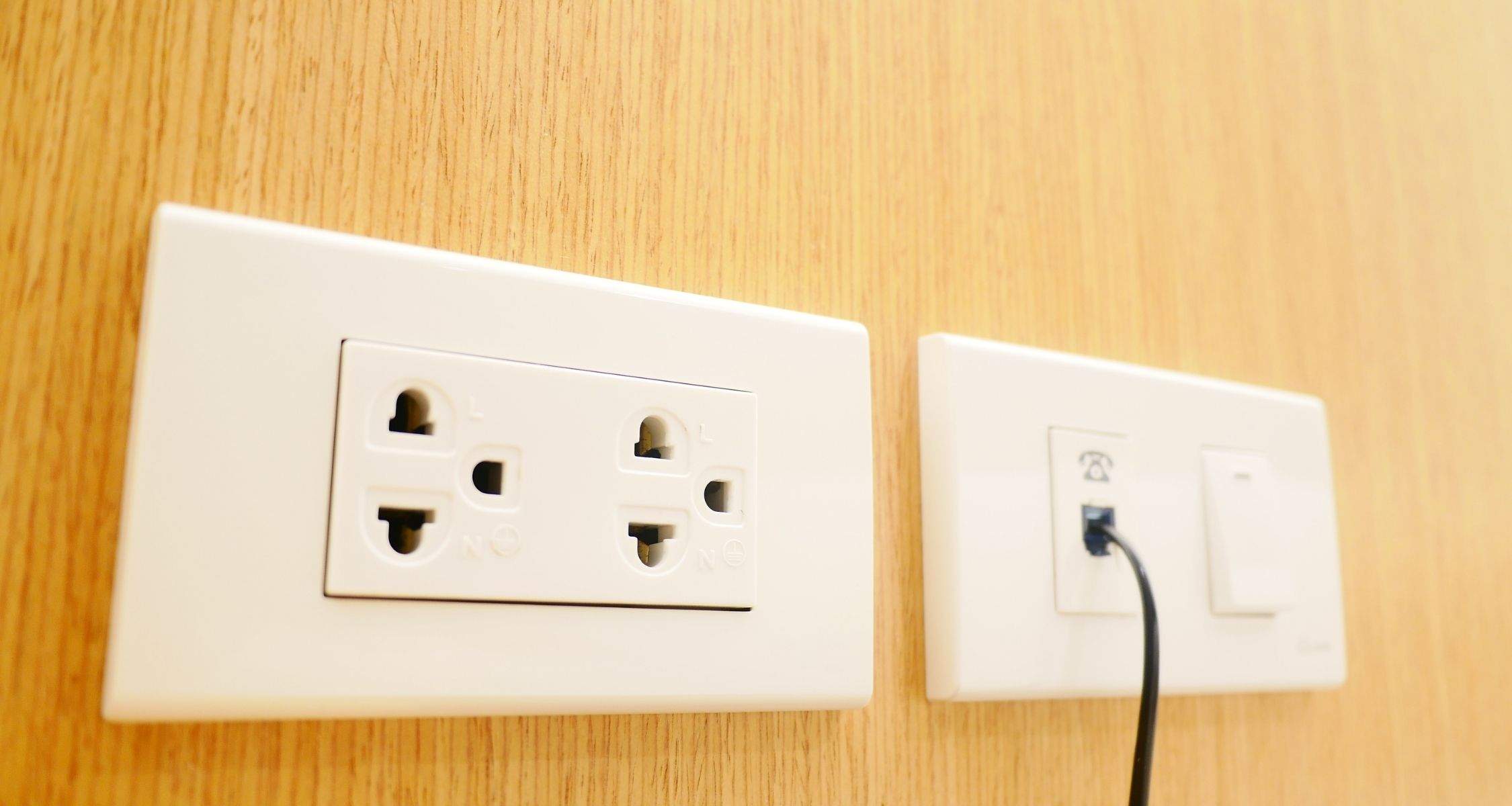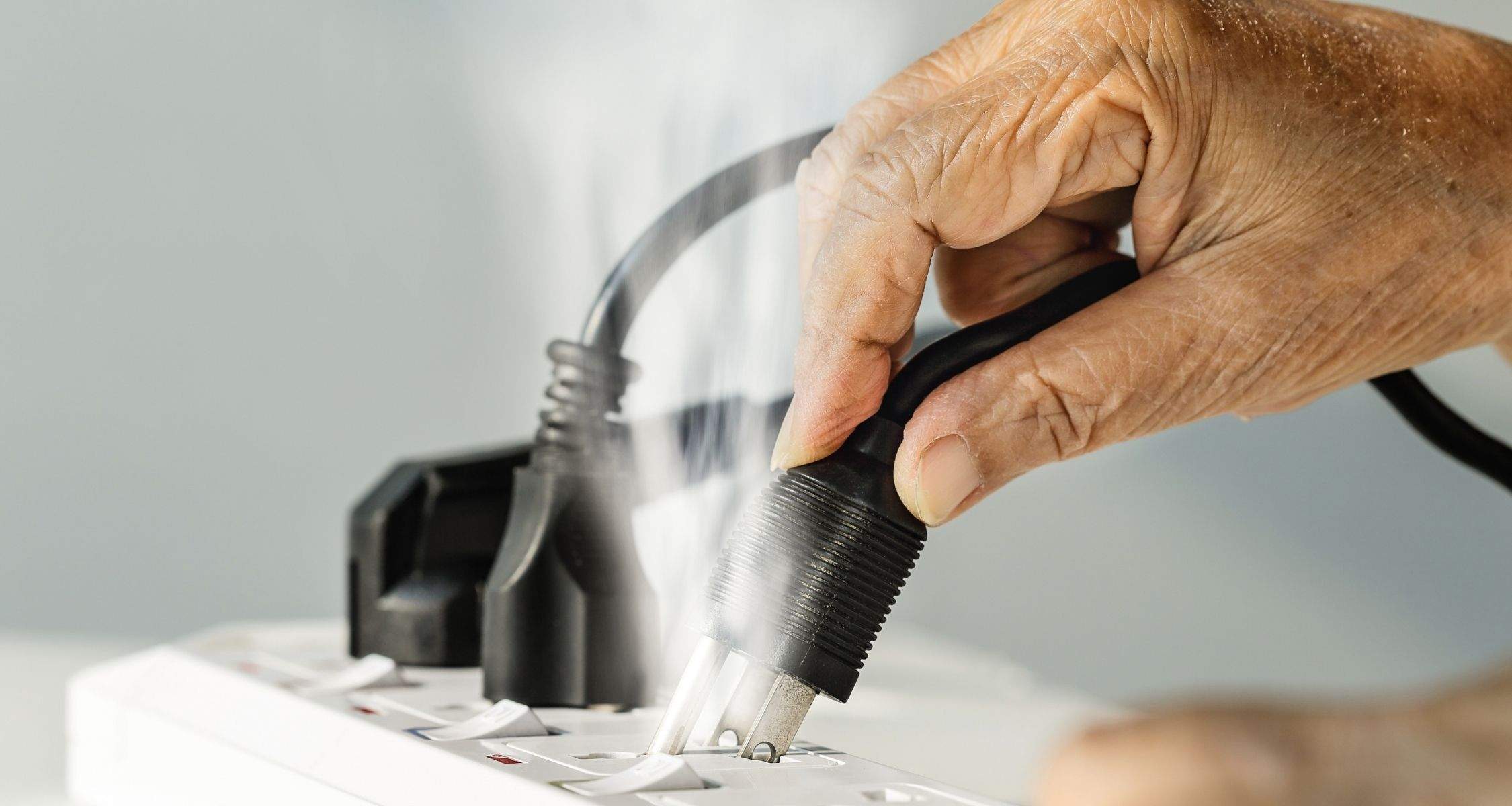Table of Contents:
Avoid overloading your home Outlets
Tips for avoiding the dangers associated with overloading an outlet
- Never overload an outlet with more than two appliances or “piggyback” additional appliances on extension cords or wall outlets. Utilize only outlets that are designed to accommodate multiple plugs.
- Be aware of the amount of power being applied to an outlet or circuit. According to some, no outlet or circuit should exceed 1,500 watts.
- Due to their high power consumption, major appliances (refrigerators, dryers, washers, stoves, and air conditioners, for example) should be plugged directly into their own wall outlet.
- If you discover that you have overloaded an outlet or circuit in your home, you may need to contact a professional for assistance.
Additionally, you’ll want to keep an eye out for these warning signs of electrical system overload. If any of the following are present, you should have a professional inspect your home:
- Frequently, lights flicker, blink, or dim momentarily.
- Frequently, circuit breakers trip or fuses blow.
- To the touch, cords or wall plates are warm or discoloured.
- Outlets emit a crackling, sizzling, or buzzing sound.
If an electrical fire does occur, the following steps should be taken:
- Contact a suitable emergency service.
- If an electrical fire must be extinguished, use a dry fire extinguisher or baking soda. Never attempt to put out an electrical fire using water!
- If the fire is large, make an attempt to shut off the primary power source. Avoid attempting to extinguish the fire on your own.
Electrical Safety Tips at Home
The majority of home fires are preventable if electrical systems are kept in good condition and updated as needed. Outlets that are worn out or defective are frequently to blame. If you inspect all outlets for damage or deterioration on a regular basis and then repair them, you can significantly reduce your risk of a house fire and other accidents.
needed. Outlets that are worn out or defective are frequently to blame. If you inspect all outlets for damage or deterioration on a regular basis and then repair them, you can significantly reduce your risk of a house fire and other accidents.
- Conduct an inspection of your electrical outlets
It is prudent to conduct periodic checks of all electrical outlets to avoid electrical fires and shocks. Ascertain that all covers are secure and that there are no exposed wires or gaps between the electrical outlet and the adjacent wall. Electrical outlets with cracks or holes should be replaced or repaired. It is far preferable to hire a professional to repair or replace electrical systems in a home or business. Licensed electricians are trained to resolve issues safely and to ensure that your electrical system remains compliant. Even if you have the expertise to perform simple electrical outlet repairs and replacements, be sure to follow all necessary safety precautions.
- Outlets that have been updated
Many older homes have outdated wiring and two-pronged outlets. If you notice this, you should contact a reputable electrician to have your home’s wiring inspected. Upgrade the wiring and install new grounded outlets. Electrical outlets with two prongs should be replaced with grounded outlets with three prongs that can be used with three-prong electrical appliances. Additionally, you’ll want to verify that any two-pronged outlets have a grounding wire built into the receptacle. If this wire is not present, the three-pronged outlets cannot be installed because they will not be grounded. Before you replace the outlets, you will need to add grounding wires. Ground Fault Circuit Interrupter (GCFI) outlets are another option for updating electrical outlets. This safety feature guards against electrocution in the event of an accident. The GCFI will detect and interrupt ground faults, thereby preventing electrical discharges and fires.
- Outlets that are damaged or improperly installed
The presence of outlets that are not properly installed or maintained is a major cause of electrical accidents in the home. Conduct routine inspections of all electrical outlets in your home, particularly those in high-traffic areas such as the kitchen and bathroom, will improve your home’s electrical safety. All electrical appliances, particularly those in the kitchen and bathroom, should be mounted at a height that keeps them out of direct contact with water.
- Plugs Used Safely
When inserting or detaching an appliance’s plug and cord from an electrical outlet, be sure to secure the plug’s base. Do not simply pull the cord to unplug it from the outlet, as this may cause damage. Tugging cords from a distance and at an angle can cause wires to break and plugs to bend, but it can also cause damage to the outlet. Even if your electrical system meets all applicable safety standards, avoiding touching electrical outlets with wet hands is critical. Because water is a conductor, it increases the risk of electrocution. Moisture and electricity do not mix.
- Children and Electrical Outlets
Each year, numerous preschoolers sustain injuries as a result of inadvertently inserting inappropriate objects into power outlets. Residents with children should cover unused electrical outlets with child-safe plastic safety plugs or other products that help protect infants from accidents.
- Outlets on the Outside
All of the safety tips discussed here also apply to outlets located outside. All two-pronged outdoor electrical outlets should be replaced with grounded receptacles that comply with GFCI standards. A circuit tester, which can be purchased at a local hardware store, will determine whether each outlet is grounded. Ungrounded outlets will require wiring replacement. It is especially critical for outdoor power outlets to be grounded, as exposure to the elements can exacerbate risks associated with plugged-in appliances. Homeowners can help reduce the risk of accidents and fires by regularly inspecting and repairing any defects in electrical outlets. Still, when necessary repairs are not straightforward, it pays to hire a professional service provider.





